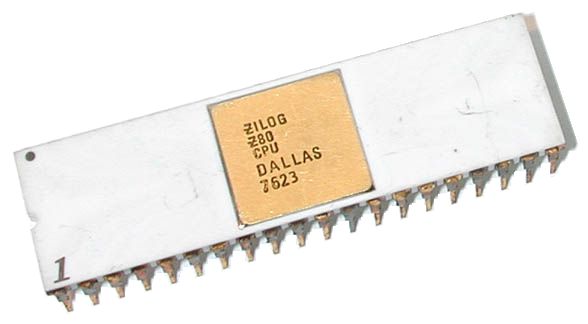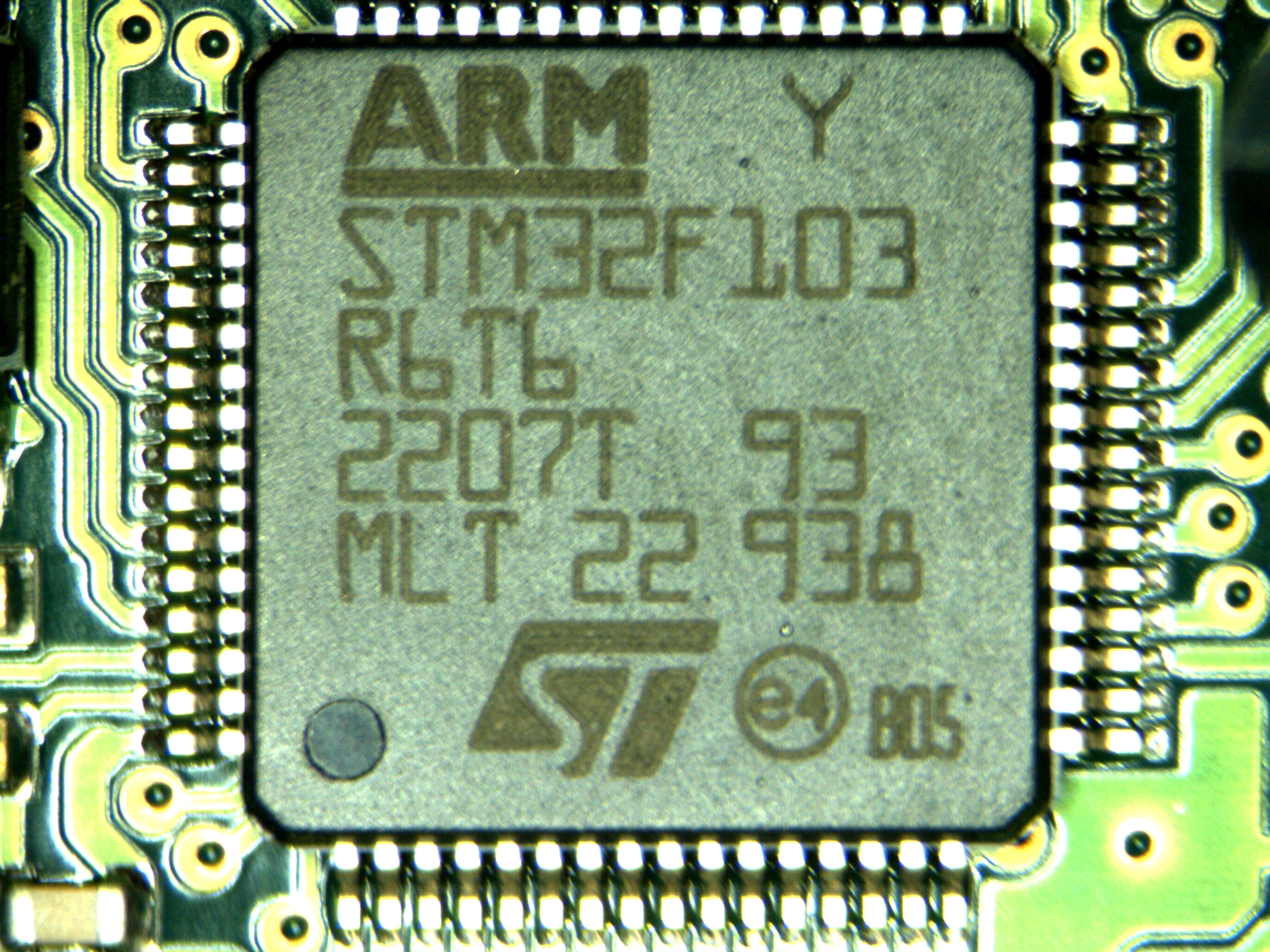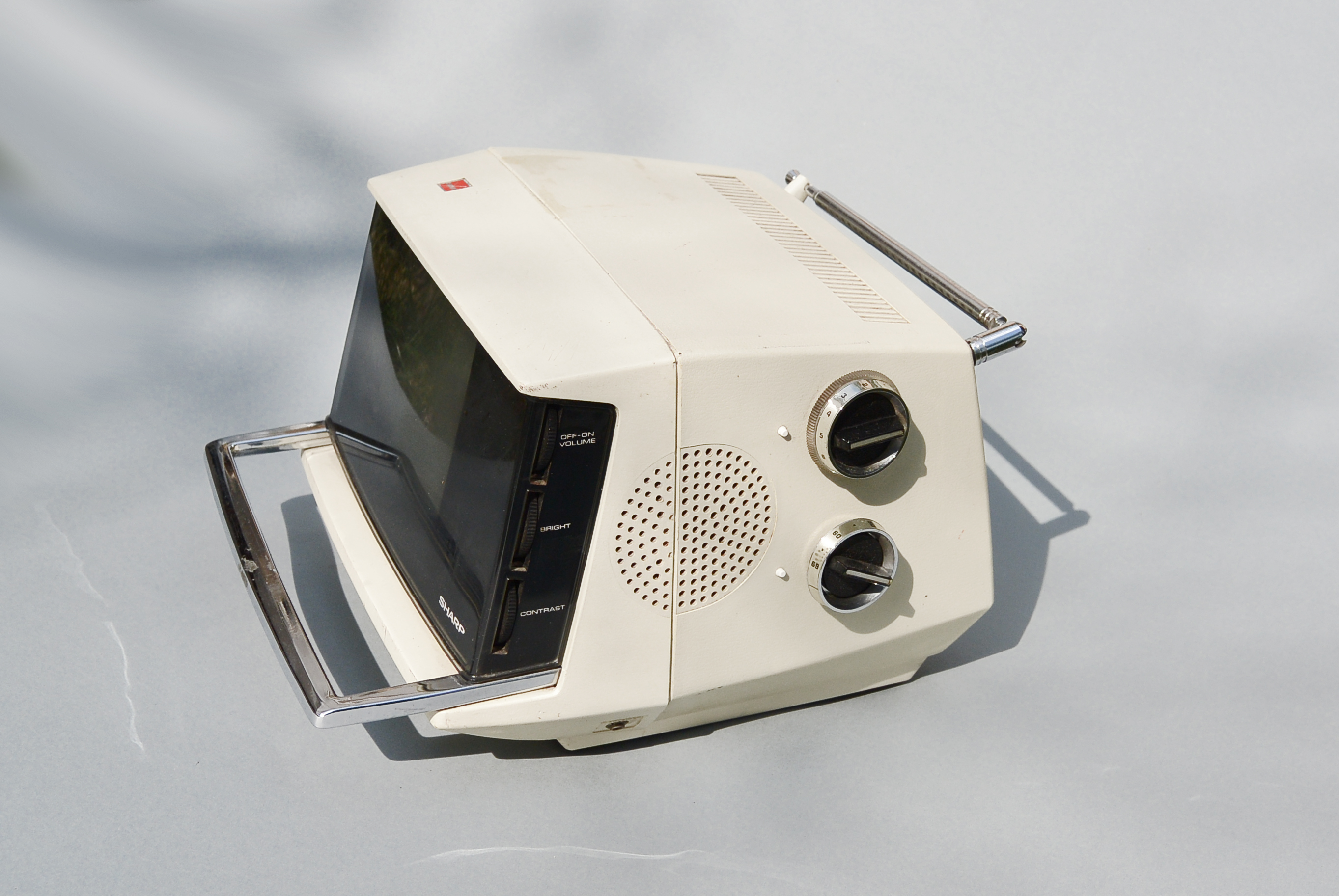|
Small Device C Compiler
The Small Device C Compiler (SDCC) is a free-software, partially retargetable C compiler for 8-bit microcontrollers. It is distributed under the GNU General Public License. The package also contains an assembler, linker, simulator and debugger. SDCC is a popular open-source C compiler for microcontrollers compatible with Intel 8051/MCS-51. Supported hosts Sources, documentation, and binaries are available for Linux (32-bit and 64-bit), macOS (PPC and 64-bit), and Windows (32-bit and 64-bit). Supported targets The following include binary compatible derivatives: * Intel 8031, 8032, 8051, 8052; Maxim/Dallas DS80C390; C8051 * Motorola/Freescale/ NXP 68HC08 and S08 * Padauk PDK14 and PDK15 * Sharp SM83, the CPU found in the Nintendo Game Boy LR35902 SoC * STMicroelectronics STM8 * Zilog Z80, Z180, eZ80 in Z80 mode; Rabbit Semiconductor 2000, 2000A, 3000, 3000A, 4000, 6000; Toshiba TLCS-90; Z80N ( ZX Spectrum Next processor), R800. * MOS Technology 6502, WDC 65C02. Work ... [...More Info...] [...Related Items...] OR: [Wikipedia] [Google] [Baidu] |
Freescale S08
The 9S08 (68HCS08 or S08 for short) is an 8-bit microcontroller (μC) family originally produced by Motorola, later by Freescale Semiconductor, and currently by NXP, descended from the Motorola 6800 microprocessor. It is a CISC microcontroller. A slightly extended variant of the 68HC08, it shares upward compatibility with the aging 68HC05 microcontrollers, and is found in almost any type of embedded systems. The larger members offer up to 128 KiB of flash, and 8 KiB of RAM via a simple memory management unit (MMU) which allows bank-switching 16 KiB of the address space and an address/data register pair which allows data fetches from any address. The paging scheme used allows for a theoretical maximum of 4 MB of flash. MMU-equipped variants offer two extra CPU instructions, CALL and RTC, which are used instead of JSR and RTS respectively when dealing with subroutines placed in paged memory, allowing direct page-to-page subroutine calls. In a single at ... [...More Info...] [...Related Items...] OR: [Wikipedia] [Google] [Baidu] |
Microsoft Windows
Windows is a Product lining, product line of Proprietary software, proprietary graphical user interface, graphical operating systems developed and marketed by Microsoft. It is grouped into families and subfamilies that cater to particular sectors of the computing industry – Windows (unqualified) for a consumer or corporate workstation, Windows Server for a Server (computing), server and Windows IoT for an embedded system. Windows is sold as either a consumer retail product or licensed to Original equipment manufacturer, third-party hardware manufacturers who sell products Software bundles, bundled with Windows. The first version of Windows, Windows 1.0, was released on November 20, 1985, as a graphical operating system shell for MS-DOS in response to the growing interest in graphical user interfaces (GUIs). The name "Windows" is a reference to the windowing system in GUIs. The 1990 release of Windows 3.0 catapulted its market success and led to various other product families ... [...More Info...] [...Related Items...] OR: [Wikipedia] [Google] [Baidu] |
C8051
The Intel MCS-51 (commonly termed 8051) is a single-chip microcontroller (MCU) series developed by Intel in 1980 for use in embedded systems. The architect of the Intel MCS-51 instruction set was John H. Wharton.. Intel's original versions were popular in the 1980s and early 1990s, and enhanced binary compatible derivatives remain popular today. It is a complex instruction set computer with separate memory spaces for program instructions and data. Intel's original MCS-51 family was developed using N-type metal–oxide–semiconductor ( NMOS) technology, like its predecessor Intel MCS-48, but later versions, identified by a letter C in their name (e.g., 80C51) use complementary metal–oxide–semiconductor (CMOS) technology and consume less power than their NMOS predecessors. This made them more suitable for battery-powered devices. The family was continued in 1996 with the enhanced 8-bit MCS-151 and the 8/ 16/32-bit MCS-251 family of binary compatible microcontrollers. Whi ... [...More Info...] [...Related Items...] OR: [Wikipedia] [Google] [Baidu] |
EZ80
The Zilog eZ80 is an 8-bit microprocessor designed by Zilog as an updated version of the company's first product, the highly-successful Zilog Z80. The eZ80 is binary compatible with the Z80, but it operates almost three times faster at the same clock frequency. Design The eZ80 has a three-stage pipeline: fetch, decode, and execute. When an instruction changes the program counter, it flushes the instructions that the CPU is currently processing. Available at up to 50 MHz (2004), the performance is comparable to a Z80 clocked at 150 MHz if fast memory is used (i.e. no wait states for opcode fetches, for data, or for I/O) or even higher in some applications (a 16-bit addition is 11 times as fast as in the original). The original Z80-compatible 16-bit register configuration is supported. The eZ80 also supports direct continuous addressing of 16 MB of memory without a memory management unit, by extending most registers (HL, BC, DE, IX, IY, SP, and PC) from 16 to 2 ... [...More Info...] [...Related Items...] OR: [Wikipedia] [Google] [Baidu] |
Z180
The Zilog Z180 is an 8-bit microprocessor designed by Zilog as a successor to the Z80. It is compatible with the large base of software written for the Z80. The Z180 family adds higher performance and integrated peripheral functions like clock generator, 16-bit counters/timers, interrupt controller, wait-state generators, serial ports and a DMA controller. It uses separate read and write strobes, sharing similar timings with the Z80 and Intel processors. The on-chip memory management unit (MMU) has the capability of addressing up to 1 MB of memory. It is possible to configure the Z180 to operate as the Hitachi HD64180. Variants Z80182 The Zilog Z80182, introduced in 1997, is an enhanced, faster version of the older Z80 and is part of the Z180 microprocessor family. It is nicknamed the ''Zilog Intelligent Peripheral Controller'' (ZIP). It is also fully static (the clock can be halted and no data in the registers will be lost) and has a low EMI option that reduces the slew ... [...More Info...] [...Related Items...] OR: [Wikipedia] [Google] [Baidu] |
Zilog
Zilog, Inc. is an American manufacturer of microprocessors, microcontrollers, and application-specific embedded System on a chip, system-on-chip (SoC) products. The company was founded in 1974 by Federico Faggin and Ralph Ungermann, who were soon joined by Masatoshi Shima. All three had left Intel after working on the Intel 4004, 4004 and Intel 8080, 8080 microprocessors. The company's most famous product is the Zilog Z80, Z80 microprocessor, which played an important role in the evolution of early computing. Backward compatible, Software-compatible with the Intel 8080, it offered a compelling alternative due to its lower cost and increased performance, propelling it to widespread adoption in video game systems and home computers during the late 1970s and early 1980s. The name, pronounced with a long "i" (), is an acronym of ''Z integrated logic'', also thought of as "Z for the last word of Integrated Logic". History Zilog was started in California in 1974 by Federico Faggin and ... [...More Info...] [...Related Items...] OR: [Wikipedia] [Google] [Baidu] |
STM8
The STM8 is an 8-bit microcontroller family by STMicroelectronics. The STM8 microcontrollers use an extended variant of the ST6 and ST7, ST7 microcontroller architecture. STM8 microcontrollers are particularly low cost for a full-featured 8-bit microcontroller. Architecture The STM8 is very similar to the earlier ST7, but is better suited as a target for C (programming language), C due to its 16-bit index registers and stack pointer-relative addressing mode. Although internally a Harvard architecture it has "memory bridge" that creates a unified 24-bit address space, allowing code to execute out of RAM (useful for in-system programming of the flash ROM), and data (such as lookup tables) to be accessed out of ROM. On access the "memory bridge" stalls the CPU if required so that RAM-like write access to the flash ROM is possible. Code execution from the EEPROM is denied and creates a reset event. Random access to data above 64K is limited to special "load far" instructions; most ... [...More Info...] [...Related Items...] OR: [Wikipedia] [Google] [Baidu] |
STMicroelectronics
STMicroelectronics Naamloze vennootschap, NV (commonly referred to as ST or STMicro) is a European multinational corporation, multinational semiconductor contract manufacturing and design company. It is the largest of such companies in Europe. It was founded in 1987 from the merger of two state-owned semiconductor corporations: ''Thomson Semiconducteurs'' of United States/France and ''SGS Microelettronica'' of Italy. The company is incorporated in the Netherlands and headquartered in Plan-les-Ouates, Switzerland. Its shares are traded on Euronext Paris, the Borsa Italiana and the New York Stock Exchange. History ST was formed in 1987 by the merger of two government-owned semiconductor companies: Italian SGS Microelettronica (where SGS stands for ''Società Generale Semiconduttori'', "General Semiconductor Company"), and French ''Thomson Semiconducteurs'', the semiconductor arm of Thomson SA, Thomson. SGS Microelettronica originated in 1972 from a previous merger of two compan ... [...More Info...] [...Related Items...] OR: [Wikipedia] [Google] [Baidu] |
System On A Chip
A system on a chip (SoC) is an integrated circuit that combines most or all key components of a computer or Electronics, electronic system onto a single microchip. Typically, an SoC includes a central processing unit (CPU) with computer memory, memory, input/output, and computer data storage#Secondary storage, data storage control functions, along with optional features like a graphics processing unit (GPU), Wi-Fi connectivity, and radio frequency processing. This high level of integration minimizes the need for separate, discrete components, thereby enhancing Performance per watt, power efficiency and simplifying device design. High-performance SoCs are often paired with dedicated memory, such as LPDDR, and flash storage chips, such as Universal Flash Storage, eUFS or eMMC, which may be stacked directly on top of the SoC in a Package on a package, package-on-package (PoP) configuration or placed nearby on the motherboard. Some SoCs also operate alongside specialized chips, such ... [...More Info...] [...Related Items...] OR: [Wikipedia] [Google] [Baidu] |
Game Boy
The is a handheld game console developed by Nintendo, launched in the Japanese home market on April 21, 1989, followed by North America later that year and other territories from 1990 onwards. Following the success of the Game & Watch single-game handhelds, Nintendo developed the Game Boy to be more like a portable Video game console, console, with interchangeable cartridges. The concept proved highly successful, and the Game Boy family, Game Boy line became a cultural icon of the 1990s and early 2000s. The Game Boy was designed by the Nintendo Research & Development 1 team, led by Gunpei Yokoi and Satoru Okada. The device features a dot-matrix display, a D-pad, four game buttons, a single speaker, and uses Game Boy Game Pak, Game Pak cartridges. Its two-toned gray design included black, blue, and magenta accents, with softly rounded corners and a distinctive curved bottom-right edge. At launch in Japan it was sold as a standalone console, but in North America and Europe it came ... [...More Info...] [...Related Items...] OR: [Wikipedia] [Google] [Baidu] |
Sharp Corporation
is a Japanese electronics company. It is headquartered in Sakai, Osaka, and was founded by Tokuji Hayakawa in 1912 in Honjo, Tokyo, and established as the Hayakawa Metal Works Institute in Abeno-ku, Osaka, in 1924. Since 2016, it is majority owned by the Taiwan-based manufacturer Hon Hai Precision Industry Co., Ltd., better known as Foxconn. Sharp makes and has made throughout its history various different Consumer electronics, consumer electronic products, including kitchen appliances such as Microwave oven, microwave ovens, cookers, washing machines and refrigerators; home appliances such as solar cells, vacuum cleaners, Air purifier, air purifiers and lighting; home and office devices such as Printer (computing), printers, Computer monitor, computer displays, Television set, TV sets, camcorders, Videocassette recorder, VCRs, as well as calculators and various audio products such as Radio receiver, radios, Home audio, audio systems and wireless speakers. Sharp's net sales re ... [...More Info...] [...Related Items...] OR: [Wikipedia] [Google] [Baidu] |
Motorola 68HC08
The 68HC08 (also abbreviated as HC08) is a broad family of 8-bit microcontrollers from Motorola Semiconductor (later from Freescale then NXP). HC08's are fully code-compatible with their predecessors, the Motorola 68HC05. Like all Motorola processors that share lineage from the 6800, they use the von Neumann architecture as well as memory-mapped I/O. This family has five CPU registers that are not part of the memory. One 8-bit accumulator A, a 16-bit index register H:X, a 16-bit stack pointer SP, a 16-bit program counter PC, and an 8-bit condition code register CCR. Some instructions refer to the different bytes in the H:X index register independently. Among the HC08's there are dozens of processor families, each targeted to different embedded applications. Features and capabilities vary widely, from 8 to 64-pin processors, from LIN connectivity to USB Universal Serial Bus (USB) is an industry standard, developed by USB Implementers Forum (USB-IF), for digital dat ... [...More Info...] [...Related Items...] OR: [Wikipedia] [Google] [Baidu] |







